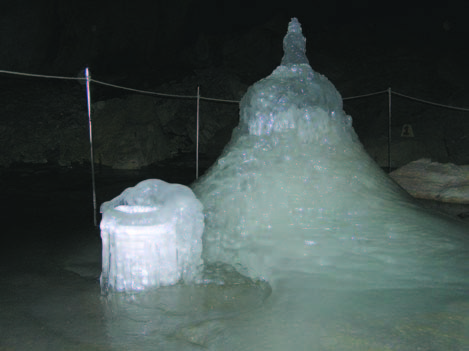Ecological studies of an epikarst community in Snežna jama na planini Arto – an ice cave in north central Slovenia
DOI:
https://doi.org/10.3986/ac.v40i3.62Abstract
Epikarst biodiversity in relation to environmental conditions was studied for the first time in an ice cave, Snežna jama na planini Arto on Mt. Raduha in north central Slovenia. In this alpine cave five sampling sites were monitored for fauna in percolation water in the period of one year. Temperature, conductivity, discharge, pH, total hardness and concentrations of various ions (calcium, chloride, nitrite, sulphate and phosphate) of water were measured. At the entrance of the cave ice is present all year round and the temperature inside the cave rises to a maximum of 4°C. These circumstances are reflected in the fauna found in percolating water. The first sampling site in the permanent ice was without fauna, as did the sampling site in an area with moonmilk. In the other three sampling sites, individuals of ten invertebrate taxa were found, Copepoda being the most abundant. Their abundance was positively correlated with discharge, pH and temperature of percolation water and additionally in the most abundant drip also with conductivity and total hardness. High proportion of immature copepods in drips shows that epikarst is their primary (i.e. source) habitat. Investigations of the alpine epikarst fauna can help to understand better the ecology of the epikarst fauna and its roles within the large range of different shallow subterranean habitats.Downloads
Download data is not yet available.

Downloads
Published
2011-12-31
How to Cite
Papi, F., & Pipan, T. (2011). Ecological studies of an epikarst community in Snežna jama na planini Arto – an ice cave in north central Slovenia. Acta Carsologica, 40(3). https://doi.org/10.3986/ac.v40i3.62
Issue
Section
Original papers
License
Authors guarantee that the work is their own original creation and does not infringe any statutory or common-law copyright or any proprietary right of any third party. In case of claims by third parties, authors commit their self to defend the interests of the publisher, and shall cover any potential costs.
More in: Submission chapter




